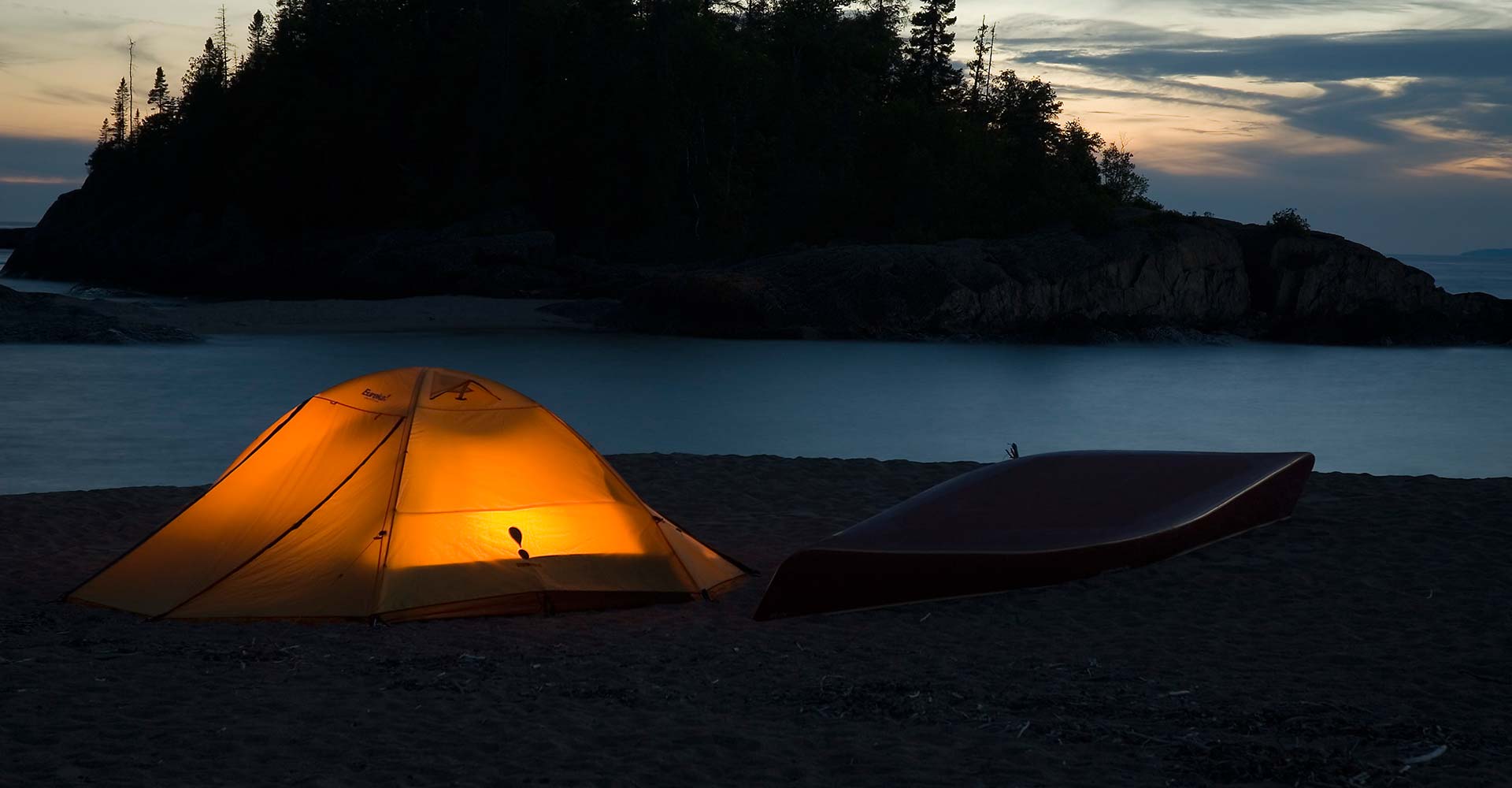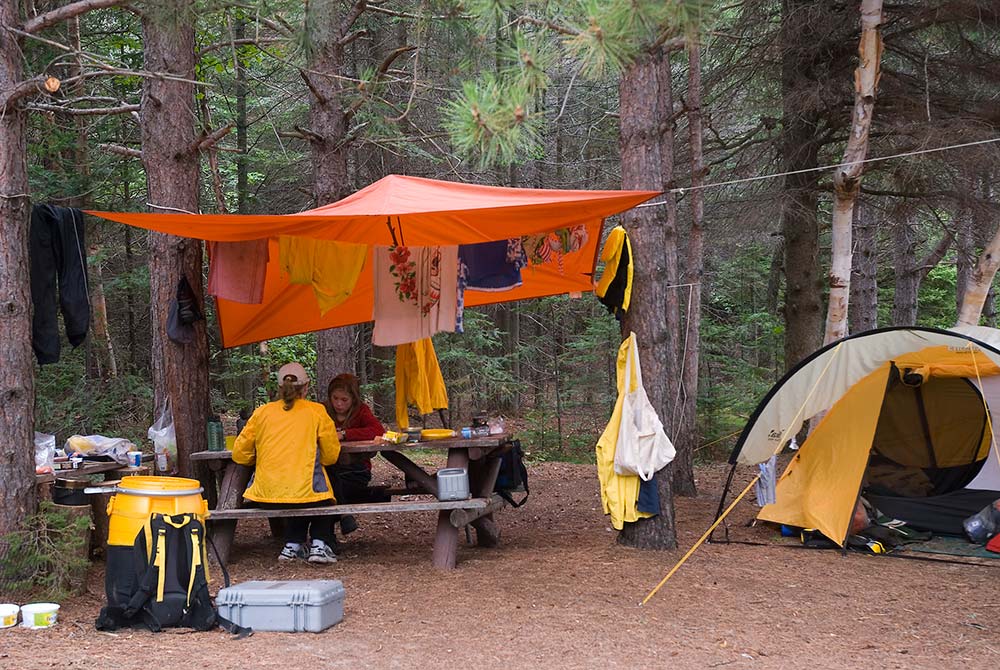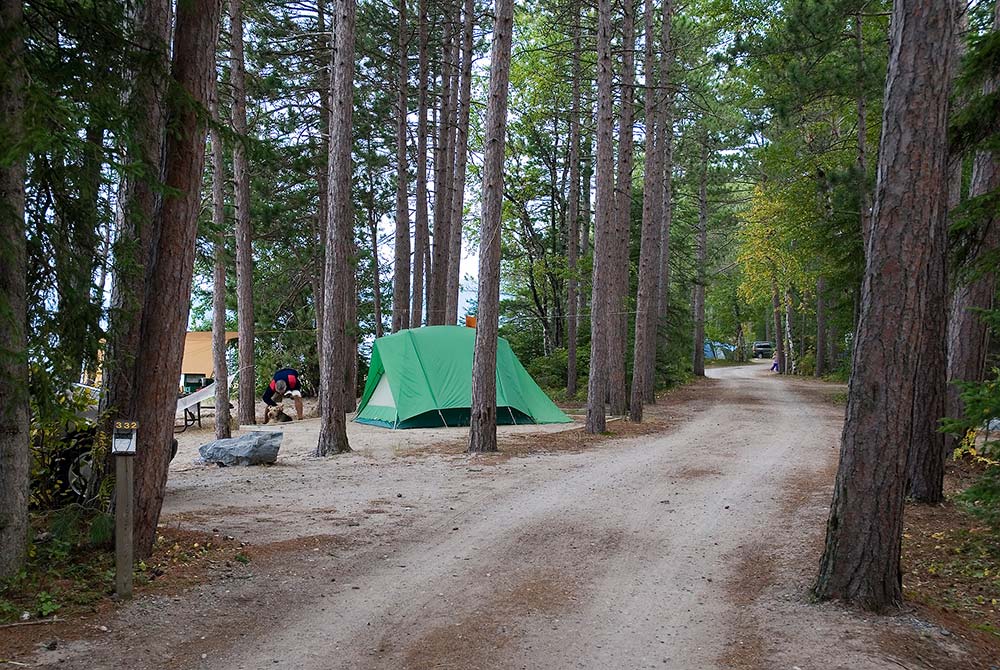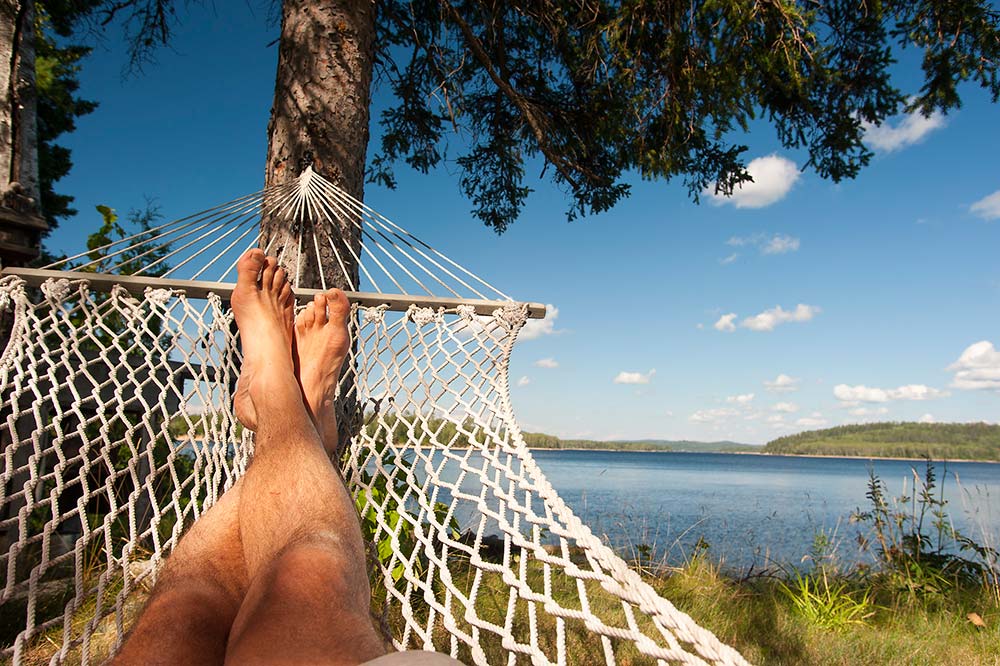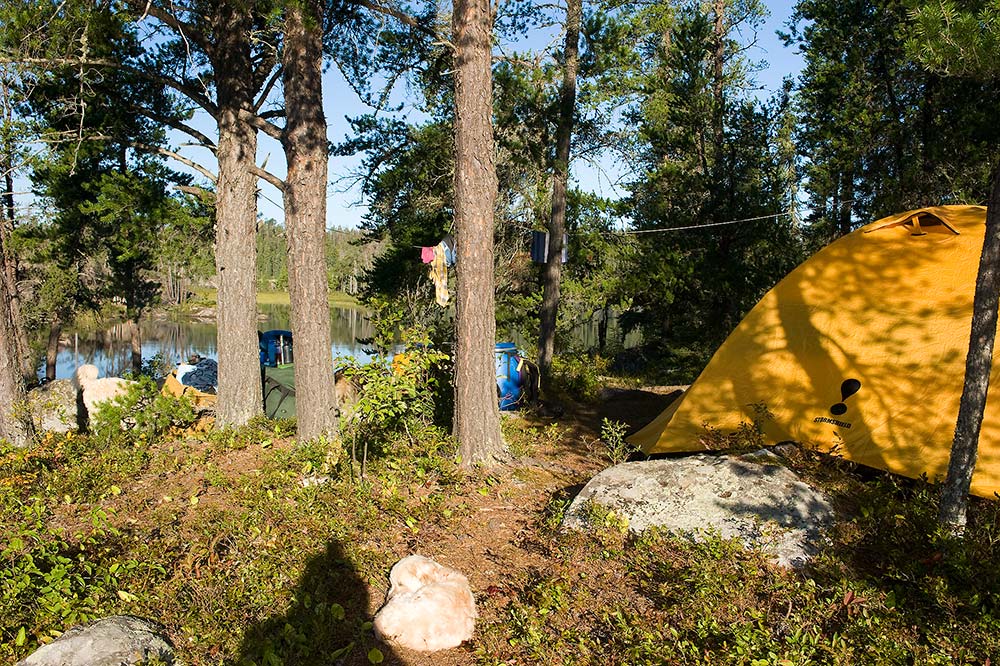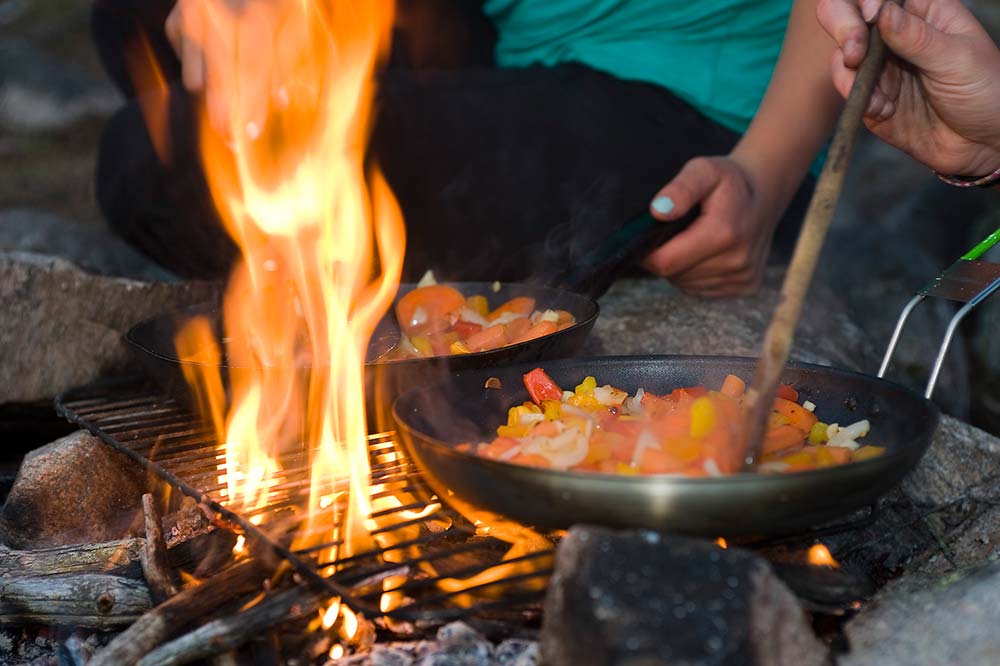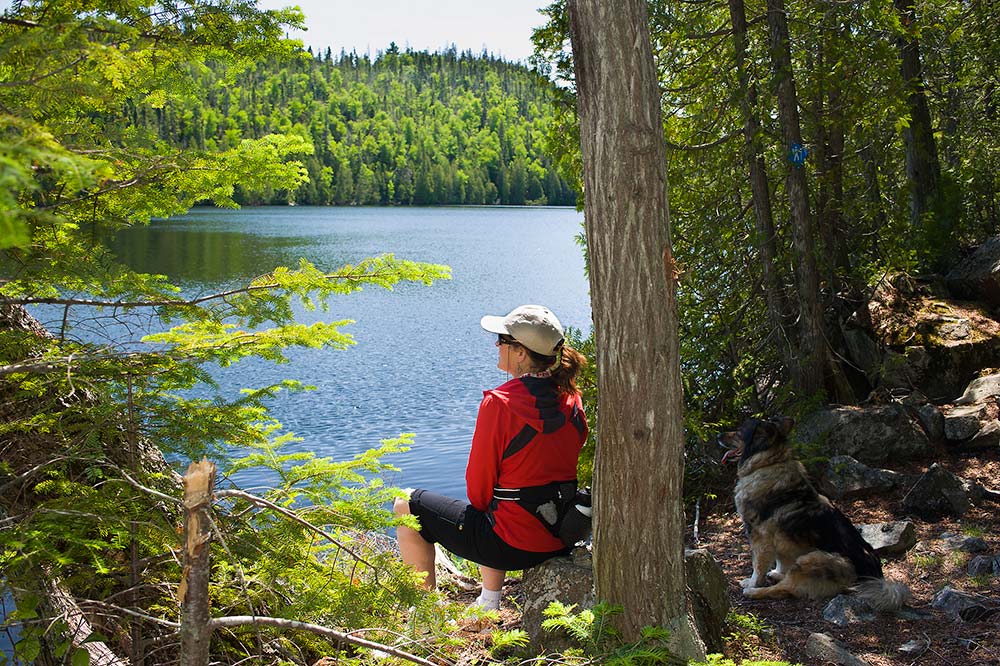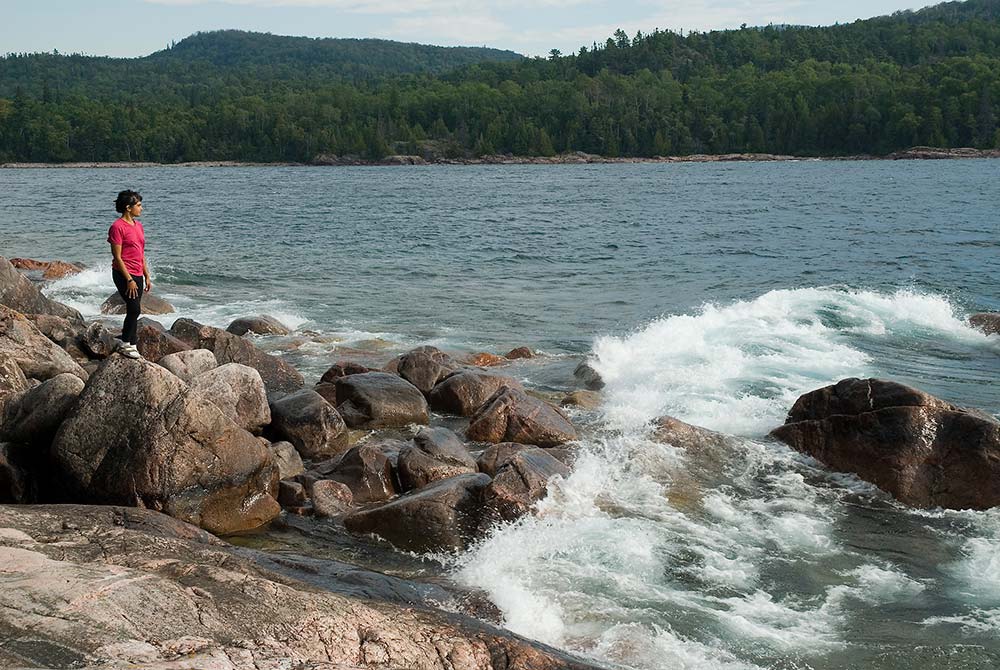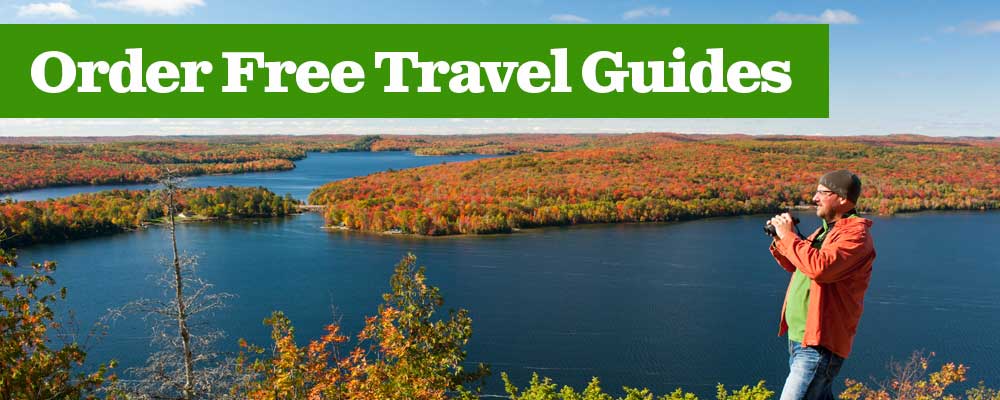Tips and Advice For Your First Trip
At any given time there is a wide variety of individuals camping across the diverse landscape of Algoma Country. Some are on extended trips, deep within the interior, while others are sitting by a fire pit in a folding lawn chair, at a designated campsite, just off the TransCanada Highway. Within Algoma’s 72,000 square kilometres rests a vast network of lakes and rivers, spanning the Great Lakes St. Lawrence forest and the vast northern boreal forests to provide a foundation for camping and wilderness exploration that is virtually limitless. Not only is there unrivalled potential for the expert, but there are plenty of user-friendly camping options to ease the beginner into the joys of outdoor living.
Ease Into It
Even if we can picture ourselves strolling into the woods for an extended wilderness trip, carrying only an axe and a bag of flour, easing into the camping scene helps ensure a safe and pleasant experience. One of the best ways to acclimatize ourselves to the great outdoors is to spend a few nights at a designated campsite, either at a private campground or one within the Ontario Provincial Park system. We simply drive to a campground and choose a campsite. It will generally have a place to pitch a tent, a picnic table and a fire pit.
Campgrounds are usually situated close to the water in particularly scenic areas with plenty of interpretive information about the woods, waters and wildlife. Provincial Parks are designated to preserve areas of natural and/or historic significance, and typically have common sense rules designed to retain the values the park was formed to protect. Campgrounds are heavy-use areas. Following the rules keep campsites beautiful for the next camper and also provides guidance on how to preserve our valuable wilderness for all to enjoy.
Car Camping
In contrast to a hiker on a month-long excursion who has to carry everything she needs in a small backpack, wheeling our vehicle up to our campsite is a luxury indeed. Think of our car or truck as a giant backpack that we can fill with everything we need to keep us warm, fed, comfortable and entertained while in the woods.
Lots of space means we can bring what we need without having to make sacrifices that could jeopardize our initial trips to the woods. That being said, it’s surprising how quickly we can fill a vehicle. A tent, camping mattress, cooler, books, instruments, lawn chairs, hammock, clothes, stove, pots, pans, cooking supplies, food and beverages are just a start. Even with the relatively large capacity of an automobile, a universal camping challenge is deciding what we need and what we can do without. Car camping is a stepping stone to more challenging camping situations, like a hiking or paddling trip, where we really have to pare down what we bring.
Simple Pleasures
A cool thing about camping is that everything seems to be accentuated in the outdoors. The strum of a guitar sounds better, a smile from a stranger is sweeter and the enjoyment of food is accentuated in the outdoors. Food is a great example of the simple pleasures that accompany camping. Perhaps it’s the fresh air and exercise but foods consumed outdoors just seem to taste better than similar fare served inside. Hunger has a lot to do with it but the ambiance of the picnic table plays a role.
Food preparation can be more difficult outdoors so keep it simple and, if possible, prepare ingredients in advance for easy assembly. If there’s a favourite meal we have at home that can be duplicated in a rudimentary camping kitchen, go for it because it will taste better eaten off our lap around the fire than it does at our dining room table. That’s just the way it is with eating in the wilderness.
Well Rested
Being lulled to sleep, by the sound of waves lapping the shore or a gentle breeze tickling the treetops, while breathing the cool night air, is one of the pleasures of camping. Sleeping in a tent can have its challenges but they are all easily addressed when car camping at a designated site. When choosing our site, select one with a flat and level area to pitch our tent. Today’s camping mattresses are compact and comfortable and provide a full inch or more of cushioned comfort. When car camping we can also opt for a thick air mattress or camping cot to satisfy even the most delicate sleepers.

In spring and early summer flying insects can ruin a camping trip if we are sensitive to having swarms of black flies and mosquitoes sucking blood from our hides. Be sure to select a waterfront campsite along an exposed shoreline as opposed to an inland site on the periphery of a cedar swamp. If bugs do get in our tent, simply light a small piece of mosquito coil and keep the zippers closed.
Dive Right In
Reading a book at our campsite or lounging in a hammock slung between two trees is great if our goal is simply to take it easy and recharge, but to truly appreciate the outdoors we should consider experiencing more of what it offers. Hiking trails lead to specific features of the land like scenic lookouts, picturesque bogs or solemn stands of old-growth forest. Lakes and rivers provide the potential for swimming or paddling.
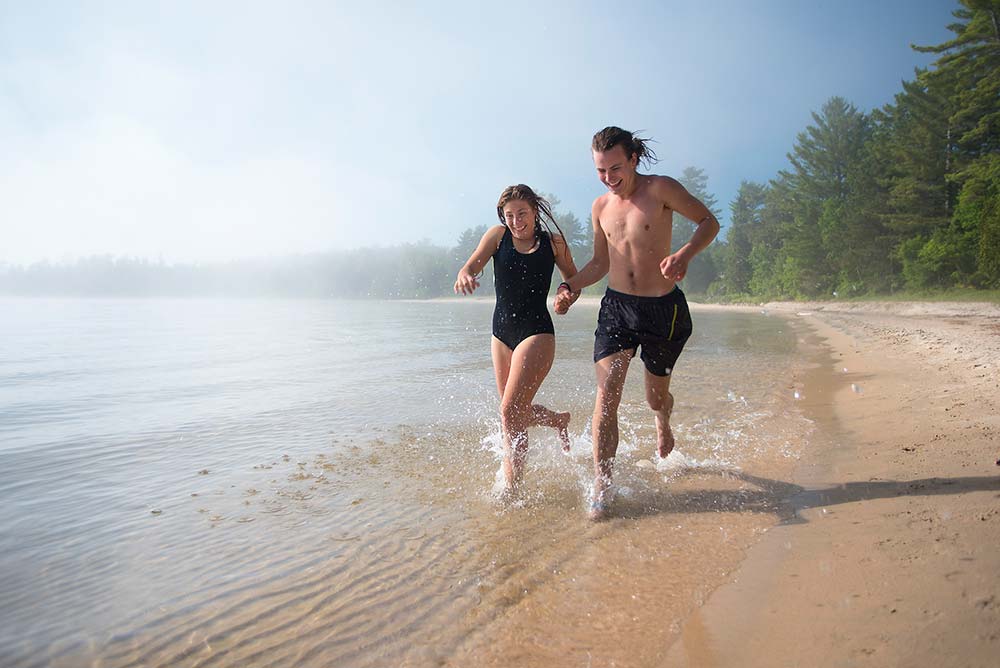
Wherever we choose to camp, find out what is offered and dive right in. When we return to our site after a few hours of fresh air and exercise, a healthy appetite will make virtually any meal taste great. By the time darkness falls our evening will be accompanied by a welcome weariness ensuring a sound sleep within the embrace of the Algoma Country forest.
Related Posts

Hikes on the Voyager Trail
Hiking trails are plentiful in Algoma. Trails may be in a provincial park,...
Read More
River Paddling Adventures
With direct access to Lake Superior, Lake Huron, and some of the most...
Read More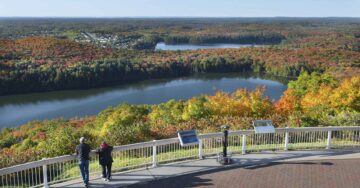
A 5 Day Fall Road Trip
Fall is the perfect time to explore Algoma Country, located from the North...
Read More